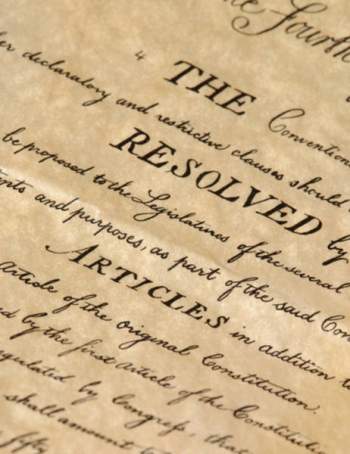
Second Article of the Constitution

Popular In Constitution
Purpose Of Lifetime Appointment And Pros And Cons Enumerated Powers Bicameral Legislature Background Article 3 Of The Constitution We The People 1st Amendment Who Wrote The Constitution Judicial Review Equal Protection Clause Three Fifths Compromise 5th Amendment 10th Amendment
The Second Article of the Constitution sets out the definition and terms of the Executive Branch of Government for the United States of America. The executive branch of any governmental structure is the one most likely to become powerful, thanks to the nature of executive power. In most countries, when a dictatorship or despotic form of government forms, the despot comes from what was once the executive branch of the government. Indeed, in the British system of the time, a great deal of power was invested in the monarch of Britain, thus empowering the executive branch of that government.
The Second Article of the Constitution, then, was an attempt to help define executive powers without letting them overrun the Government. It was aimed at both establishing the nature and election procedures for the executive branch, while also ensuring that there were some limits to the powers of that executive branch.
Article 2 has been expanded and adapted by some Amendments over the years. The Twenty-Fifth Amendment, for example, specifically clarified Clause 6 in Section 1 of the Second Article of the Constitution, because of its ill-defined wording. While Clause 6 would have provided for the Vice President to at least assume the duties of the President if the President were unable to perform them himself, it still remained vague on any number of matters, including whether or not the Vice President would become an Acting President or a full President.
The Twenty-Second Amendment was also an adaptation of the Second Article, under which the President could not be elected to the office more than twice. The Twelfth Amendment significantly altered the way in which the electoral procedure for the executive branch actually functioned, thereby superseding that part of the Second Article of the Constitution. These changes to the Second Article have helped to further define and refine the points and purposes of that Second Article, such that no difficulties will arise from the Second Article's original faulty wording or function.
This is especially important as the Second Article, for all that it is part of an intricate system, the whole of which is important to protect and preserve, deals with the branch of government which, as has been shown through countless historical examples, is the most likely to lead to abuses of power. Ensuring that the Second Article of the Constitution is refined, then, is critical for the stability of the overall country.
For example, if the Twenty-Fifth Amendment had never been implemented, then there would not be a clearly defined system for establishing a new Vice President after a Vice Presidential vacancy, and there would be no clearly defined system for a President to either establish himself as unable to fulfill his duties for the time being or for other officers in Government to be able to establish that the President is unable to fulfill his duties for the time being. The only option would be impeachment, which would not necessarily function in certain situations.
While no President has ever been removed from power by the declaration of other officers, the fact remains that without such an Amendment, the Second Article of the Constitution would have had a hole in it that could have caused potential problems at a later point in time. Because the Second Article of the Constitution concerns the Executive Branch, however, it is most critical for that Article to be able to clearly delineate the powers of the Executive Branch in order to prevent abuses of power.
NEXT: Understanding a Majority Vote





















